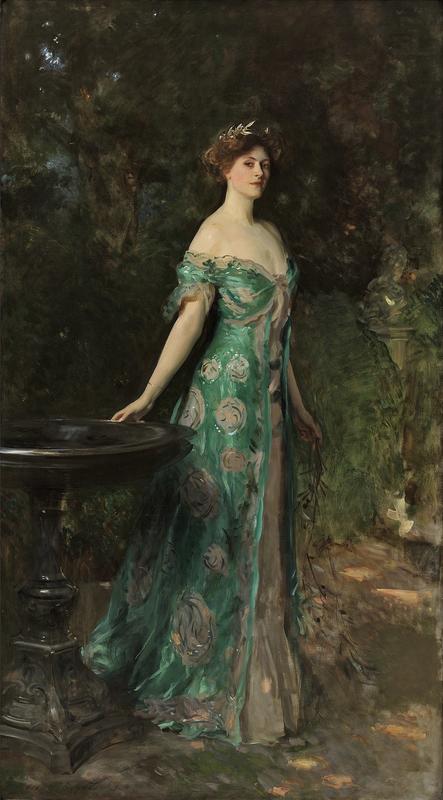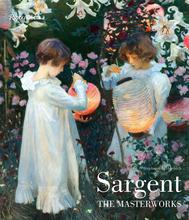More about Portrait of Millicent, Duchess of Sutherland
- All
- Info
- Shop

Sr. Contributor
In Portrait of Millicent, Duchess of Sutherland, John Singer Sargent captures the likeness, poise, and confidence of Millicent St. Clair-Erksine, a woman who would go way beyond her job description just to make a difference.
The daughter of the Earl of Rosslyn, Millicent was a purebred socialite. At the age of seventeen, she married Cromartie Sutherland Leveson-Gower, the future Duke of Sutherland. As Cromartie’s duchess, Millicent’s main responsibilities were to manage the family’s castle, keep up with an elite international social circle, and raise a family. Millicent met all the job requirements perfectly and quickly became known for her elaborate parties, impeccable hostess skills, and kind heart.
In 1904, Millicent was introduced to John Singer Sargent, who was making a name for himself as one of the best portrait artists for hoity-toity Londoners. Being his ideal sitter, Sargent proceeded to paint Portrait of Millicent, Duchess of Sutherland to show off the Duchess's glamour and bravado. Millicent wears a slim-fitted gown covered in roses, a single gold bangle, and a laurel leaf tiara as she slinks by a garden fountain. Her ghostly white skin contrasts with the dark hue of the shrubbery, bringing extra attention to her face. Giving us the side-eye, Millicent exudes an air of confidence, intelligence, and superiority.
Over the next ten years, Millicent’s unwavering ambition and determination continued to grow, coming to a head in 1914. The Duke of Sutherland had died the previous year and Millicent found herself with extra time and extra freedom. She wanted to be remembered as more than just a pretty duchess who hosted fun parties and, with the start of World War I, Millicent was able to redirect her energy towards a more worthy cause. Just five days after war was declared, the Duchess set off to France to serve as a nurse.
Millicent joined the French Red Cross and collaborated with the Belgium Service de Santé des Armées to establish her own ambulance unit. The “Millicent Sutherland Ambulance” was composed of eight British nurses, one surgeon, and a stretcher-bearer, all reporting to the Duchess. Millicent led the unit from Paris to Namur, Belgium, attending to as many wounded Allies as possible. In the late summer of 1914, while Millicent and her fellow nurses were caring for victims of a bombing, the Duchess’ ambulance unit was captured by German troops. During an interrogation with a German officer, Millicent casually mentioned her acquaintance with the Kaiser, which was enough to obtain safe passage back to Britain for her entire unit.
For some, a few months of experiencing the horrors of war would be more than enough, but Millicent was determined to return to France. After just a few months of reprieve, Millicent was back on the front lines, this time with more surgeons, ambulance drivers, and nurses. Settling near the port of Dunkirk, Millicent set up a field hospital made of tents and borrowed hotel awnings that sheltered 100 beds for the wounded. In early 1915, Sutherland Field Hospital was relocated inland to the village of Beaubourg where it operated through October of that year. For her dedicated work as a nurse and her countless donations to the Allies’ cause, Millicent was awarded the Croix de Guerre medal by the French government.
After the end of World War I, Millicent continued to give back to her community and became known for her strong morals and social conscience. Millicent lived up to her nickname, “Meddlesome Millie,” for she was never afraid to stand up for her beliefs, help those in need, and campaign against injustice.
Sources
- Alarcó, Paloma. “Portrait of Millicent, Duchess of Sutherland.” Thyssen-Bornemisza Museo Nacional. Accessed March 23, 2021. https://www.museothyssen.org/en/collection/artists/sargent-john-singer/…- duchess-sutherland.
- Bradley, Peter. “The Hospital in the Oatfield: A Special View of World War I.” British Journal of Healthcare Assistants 8, no. 8 (2014): 406-408.
- Hallet, Christine E. “Heroines in Belgium and Serbia.” In Nurse Writers of the Great War, 30-32. Manchester: Manchester University Press, 2016.
- McEnroe, Natasha. “The Duchess and the Soldier.” History Today 64, no. 3 (2014): 4-5.












